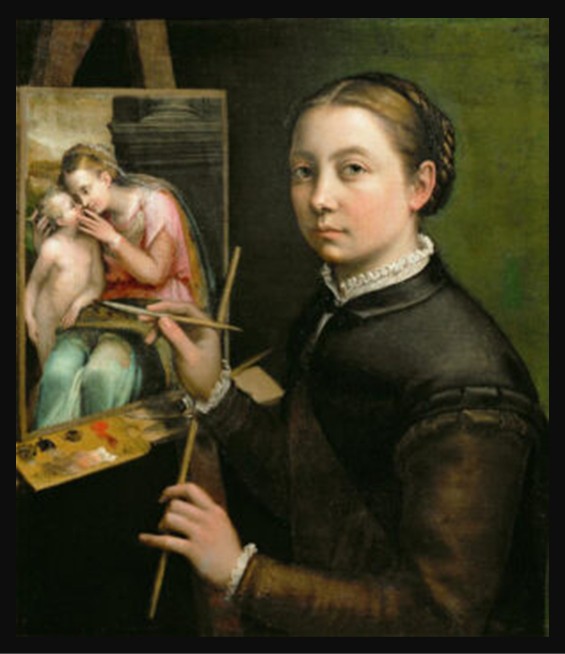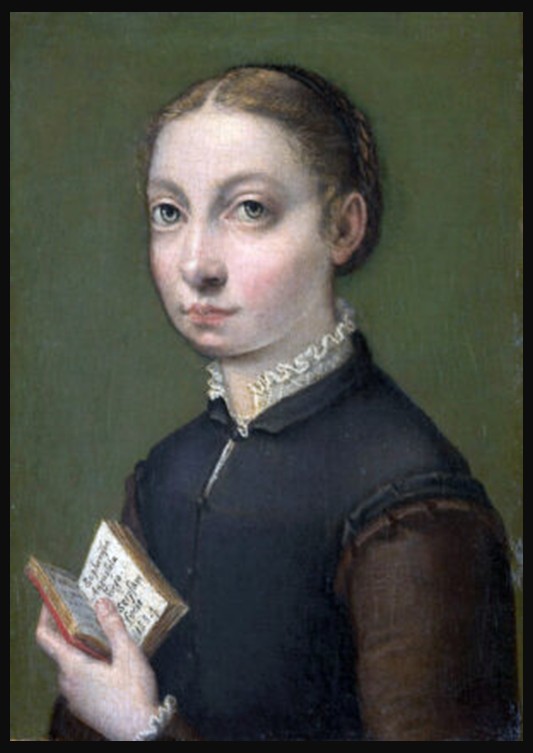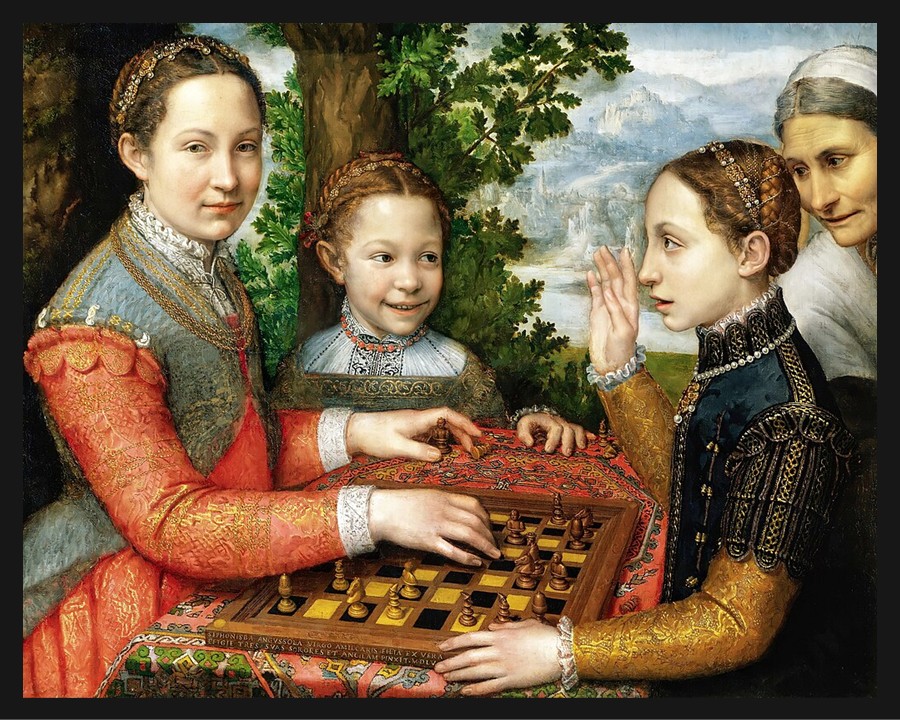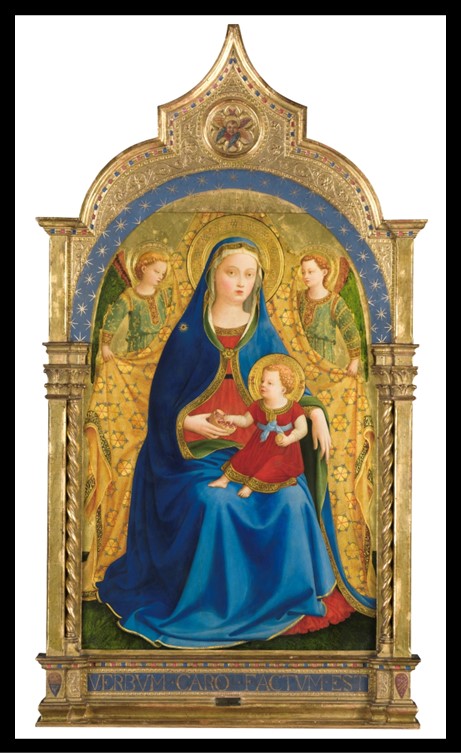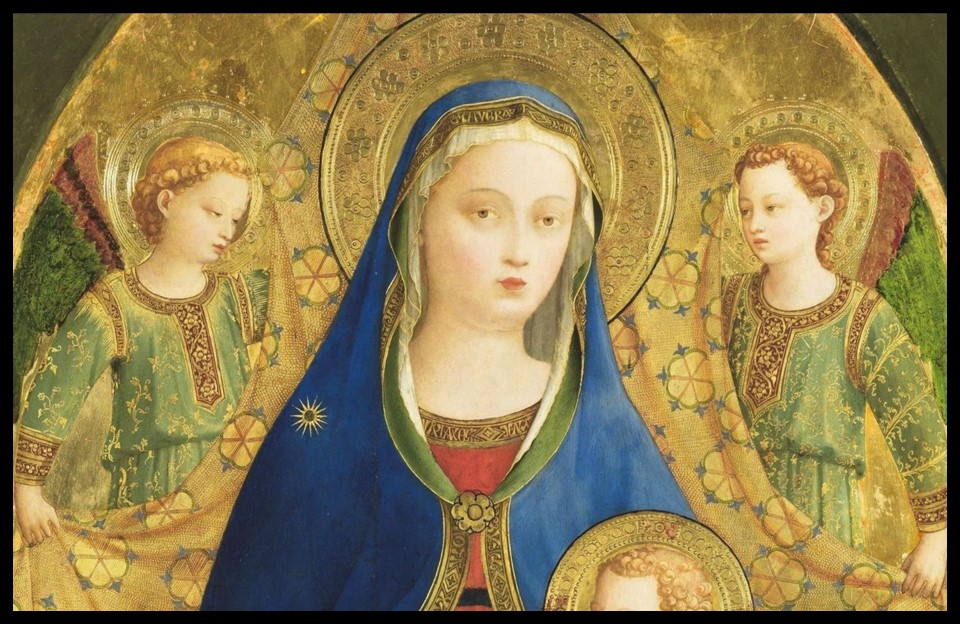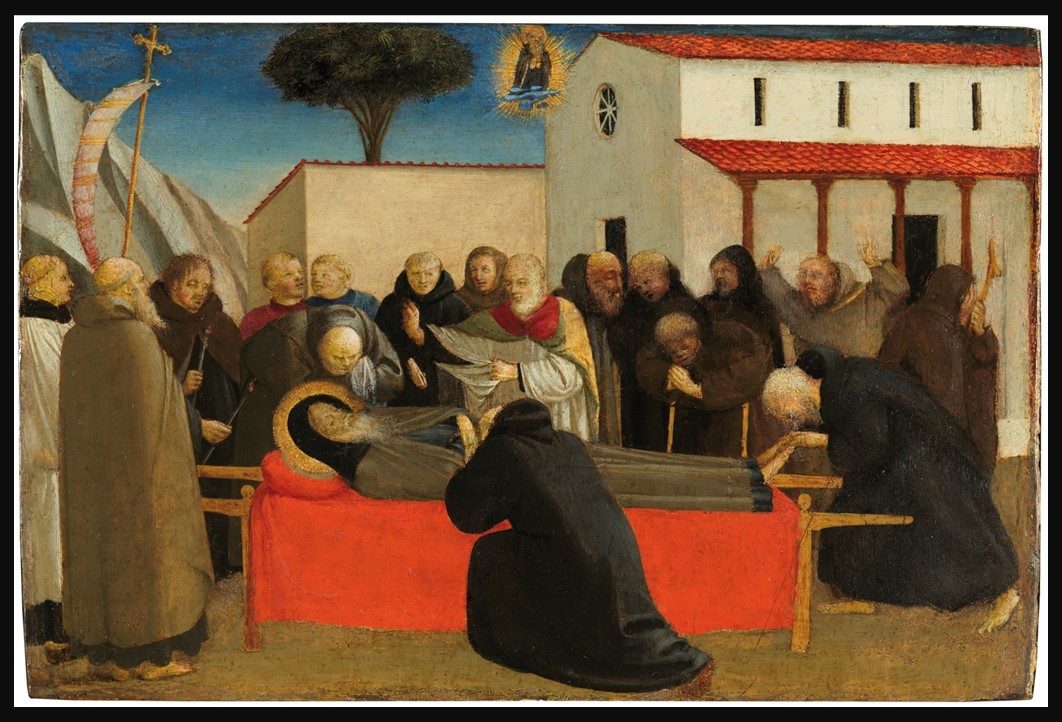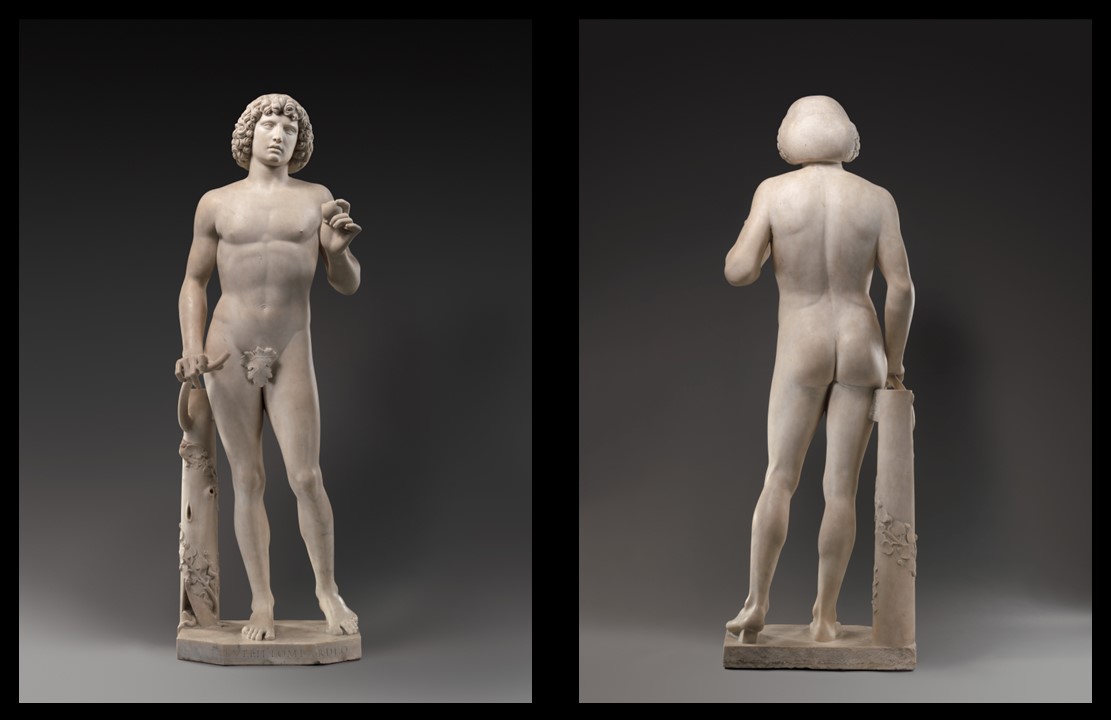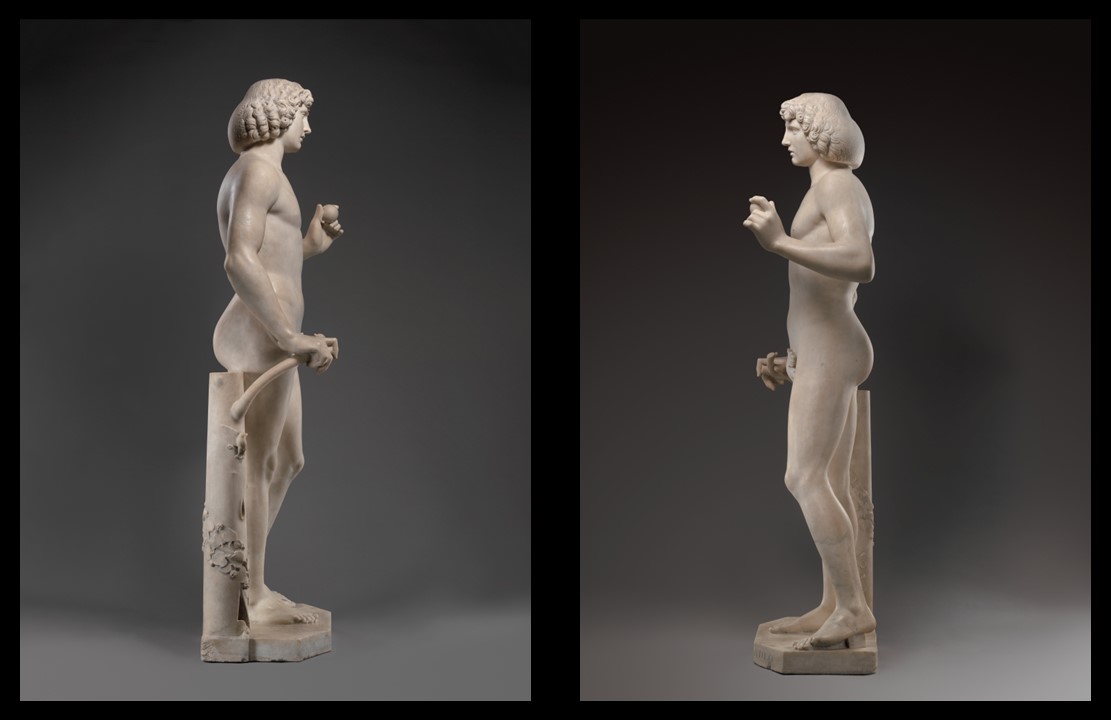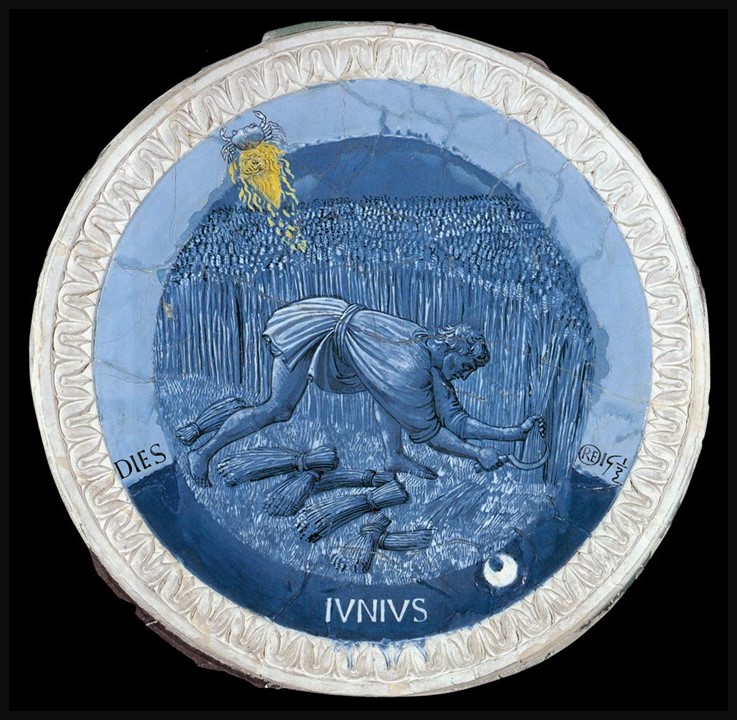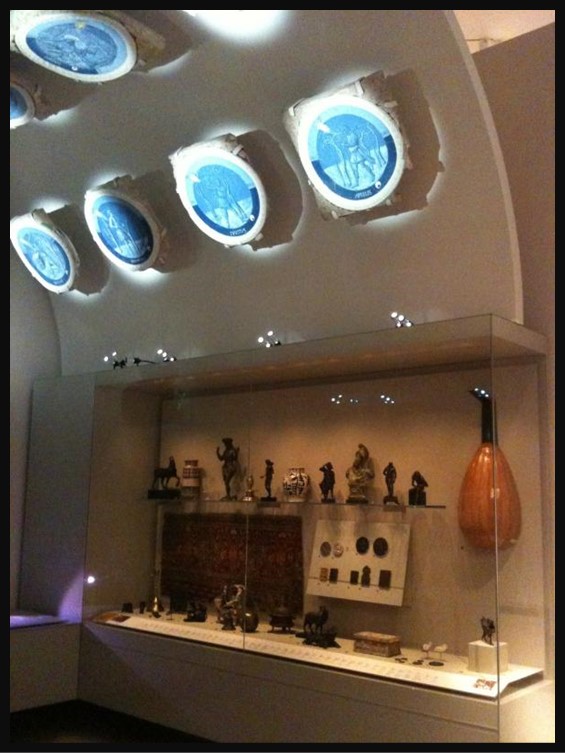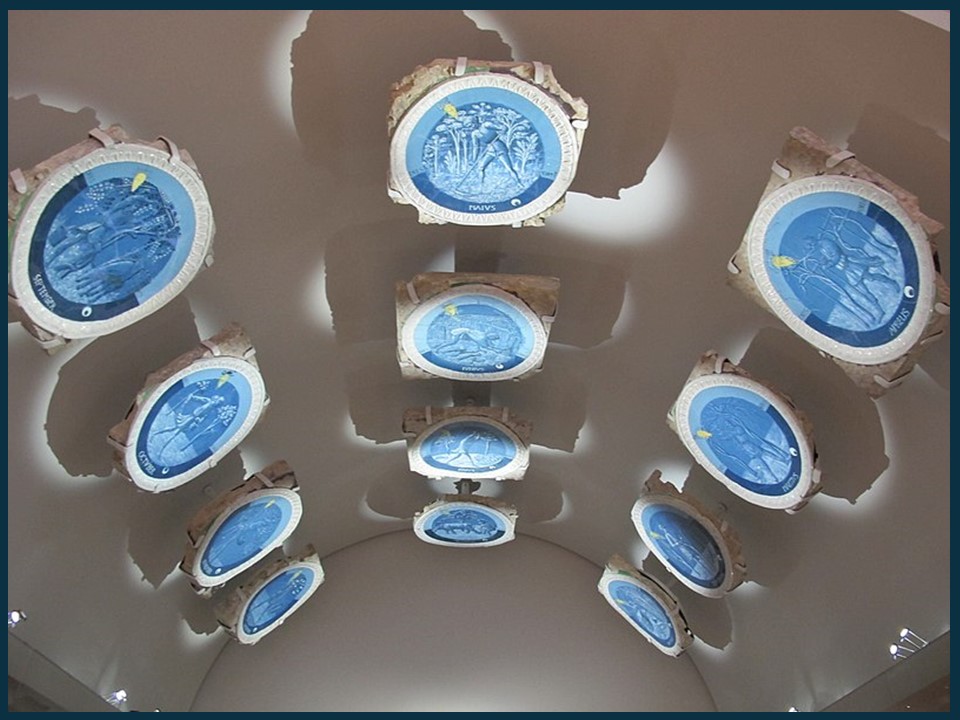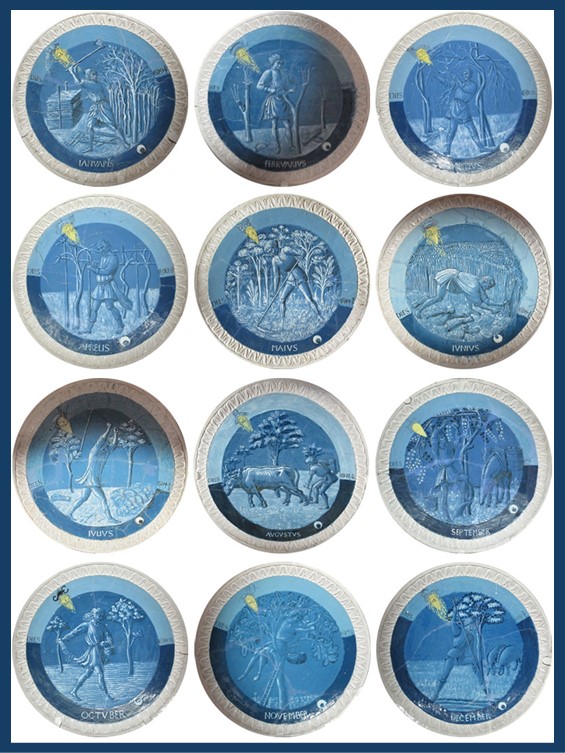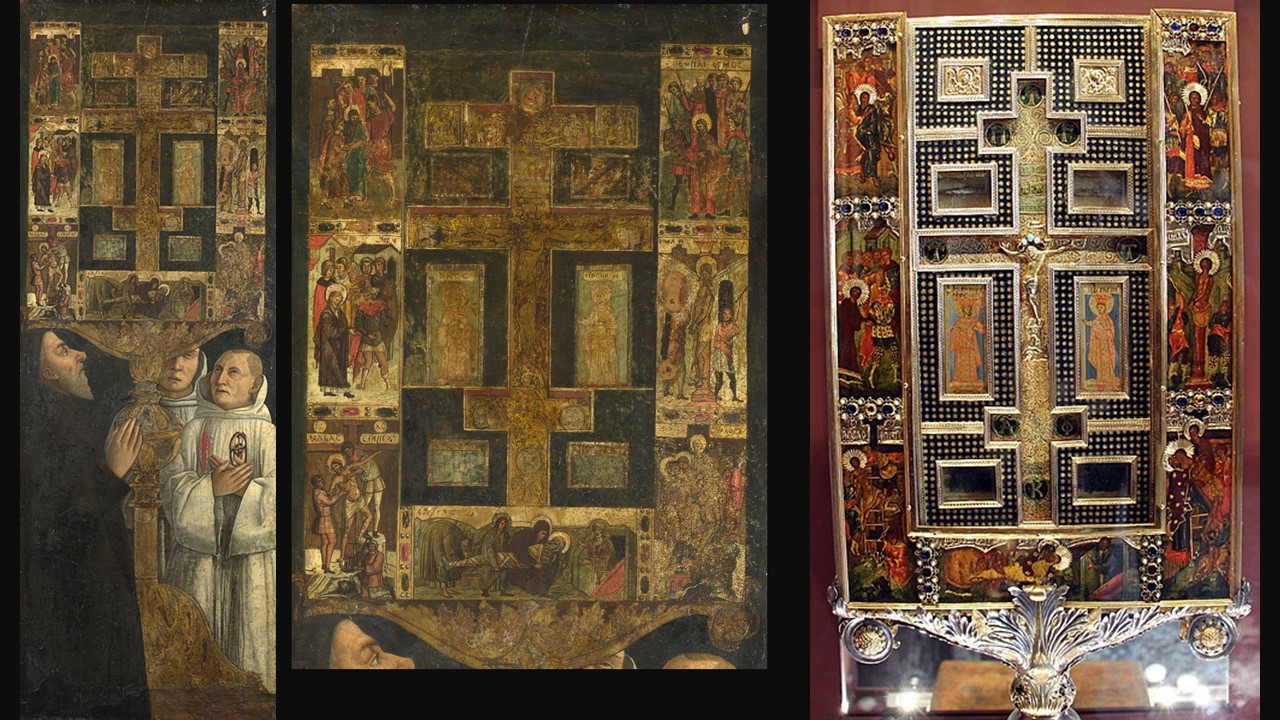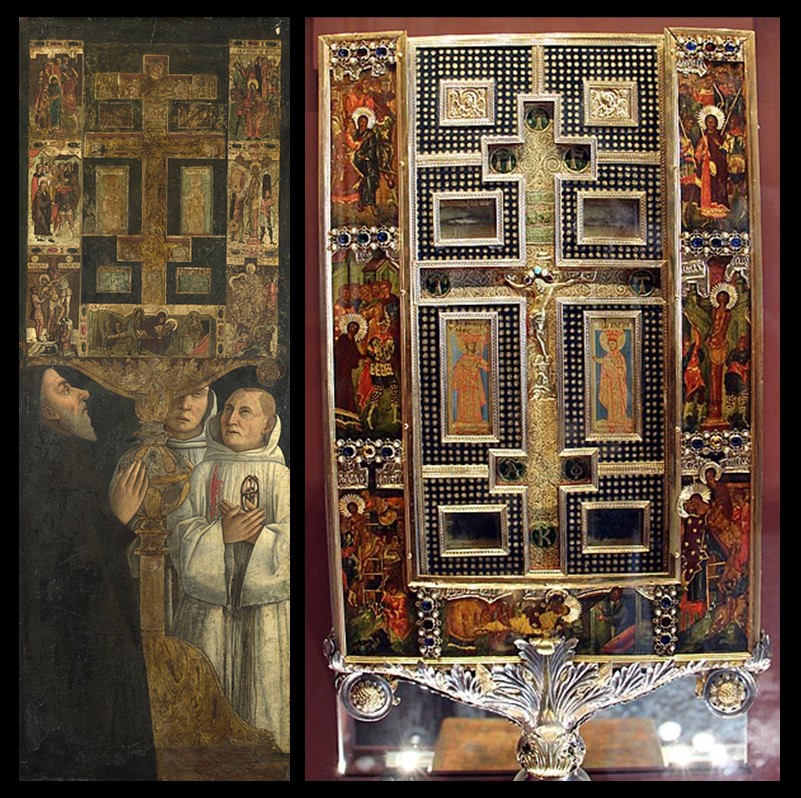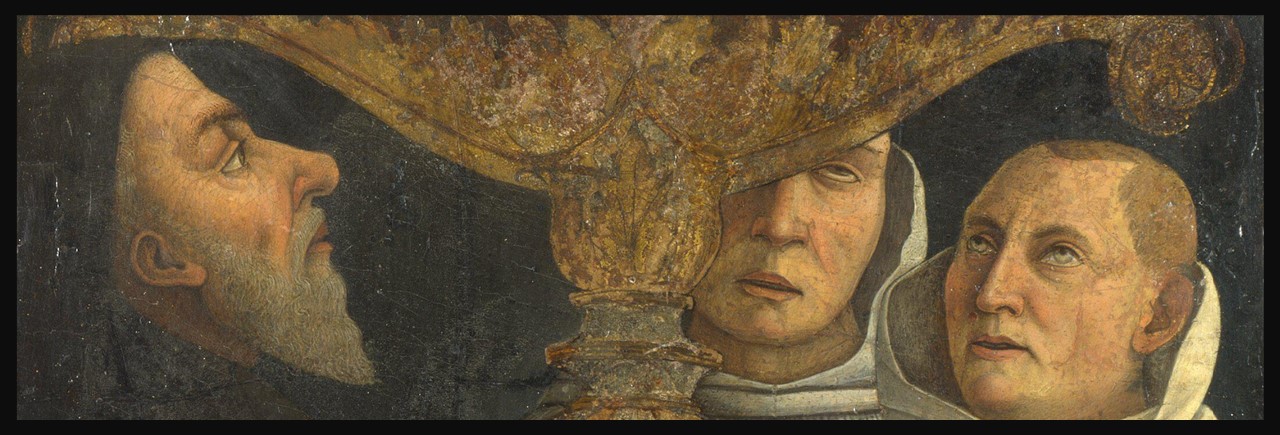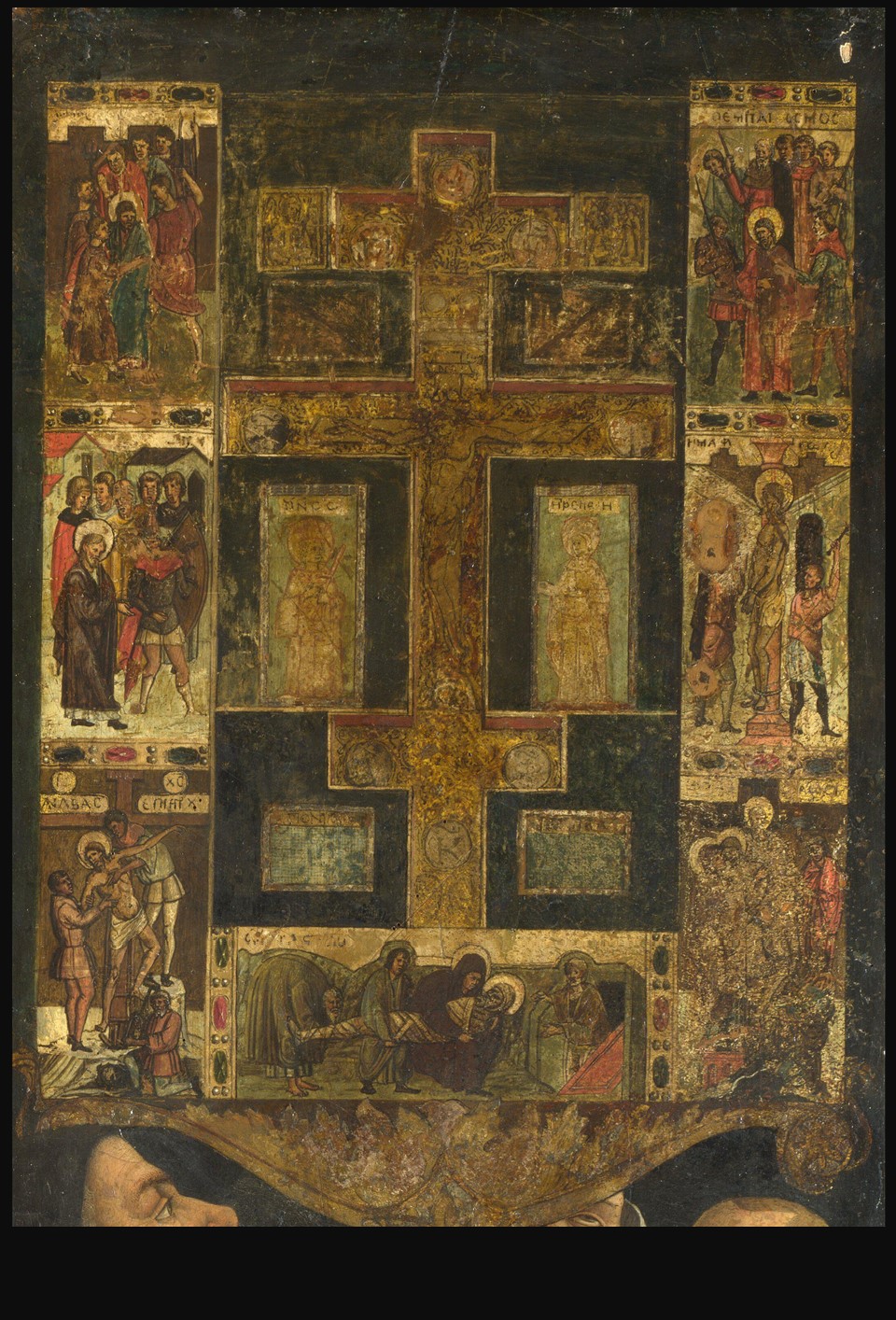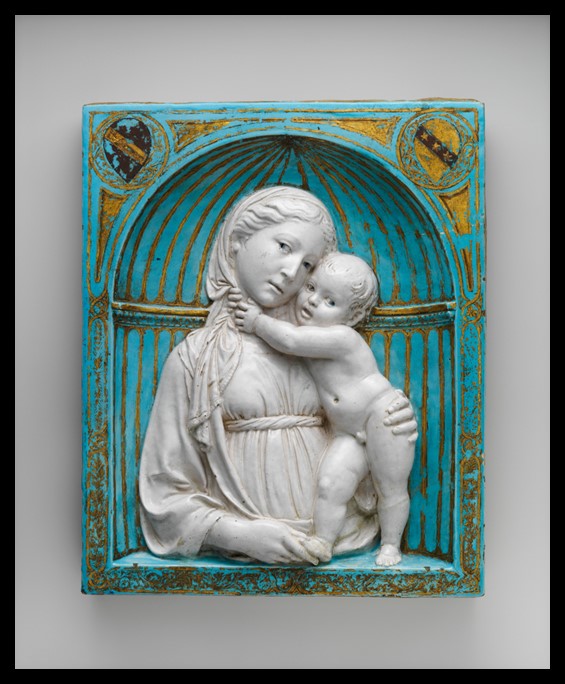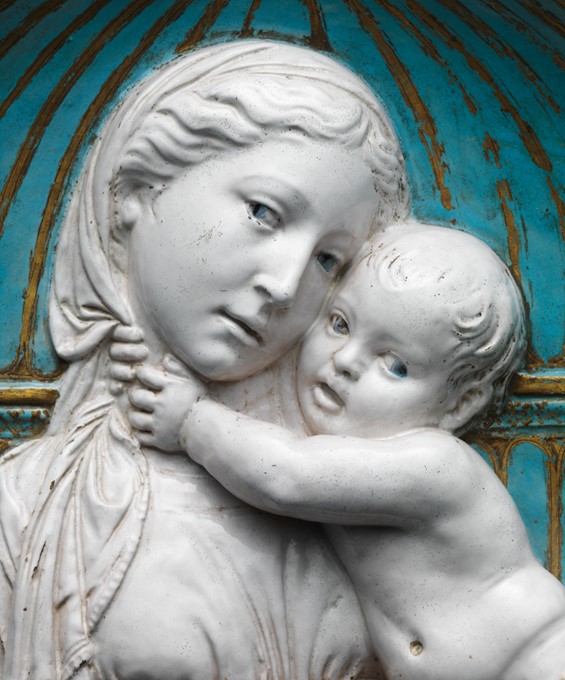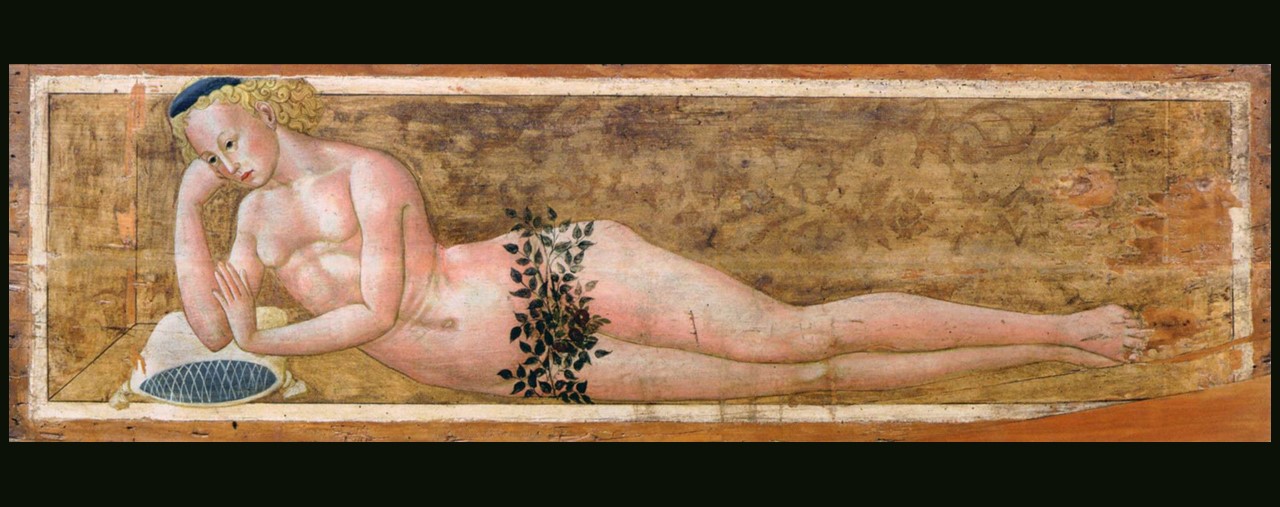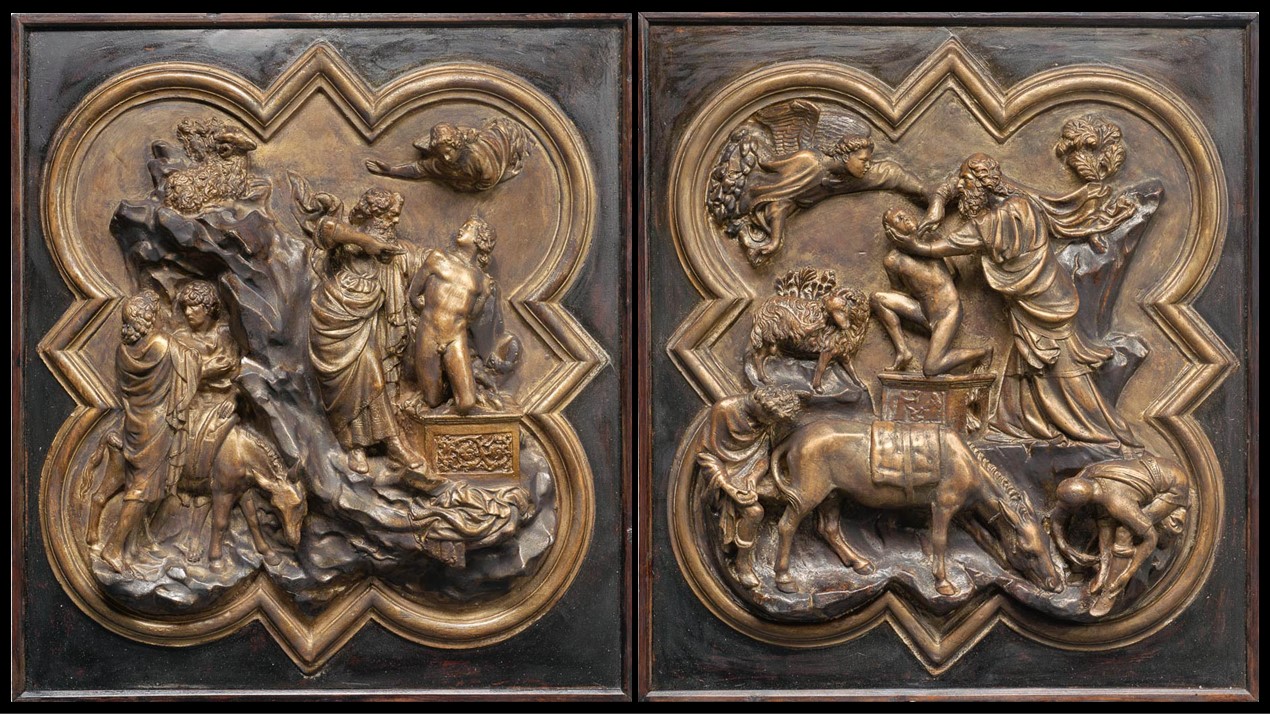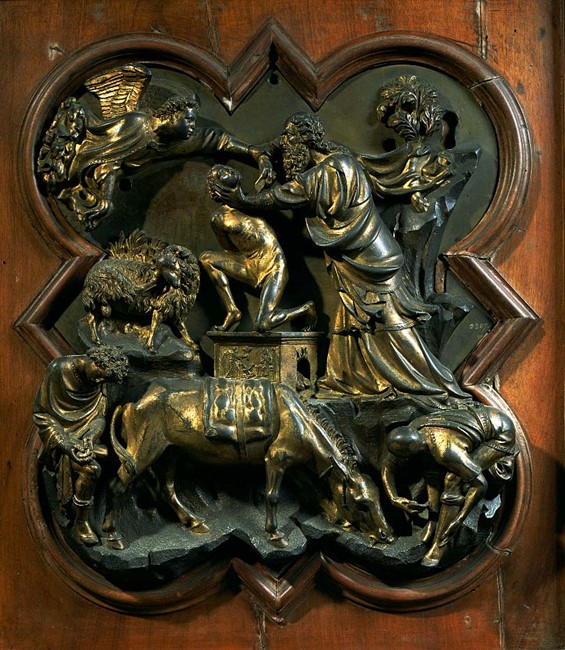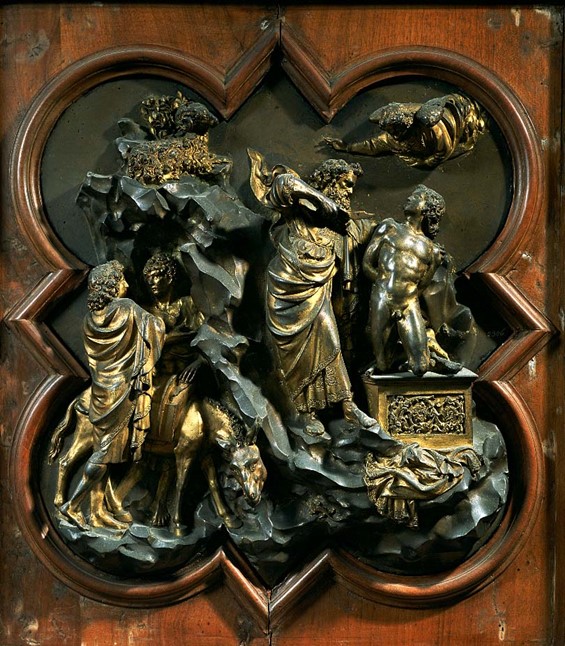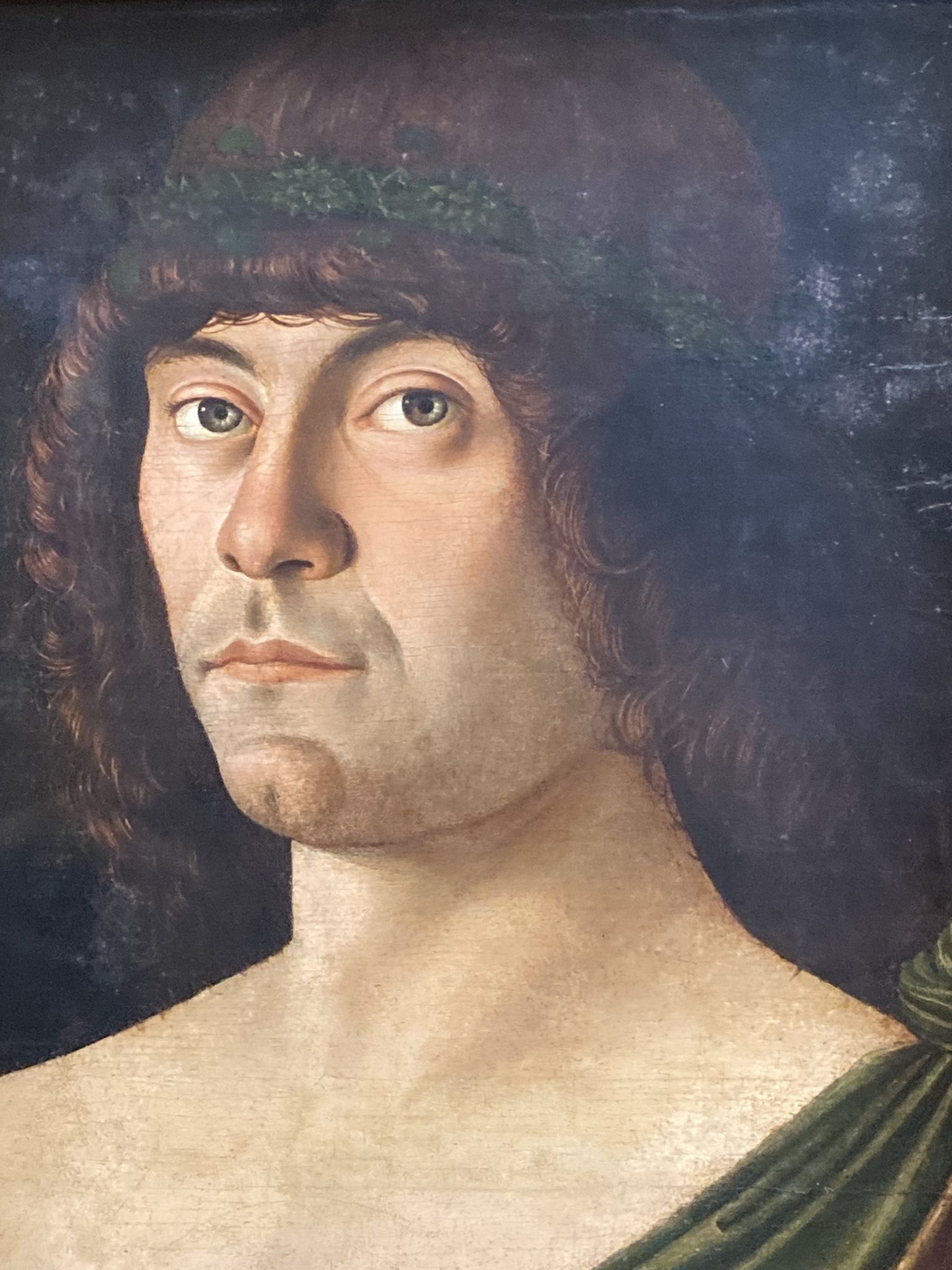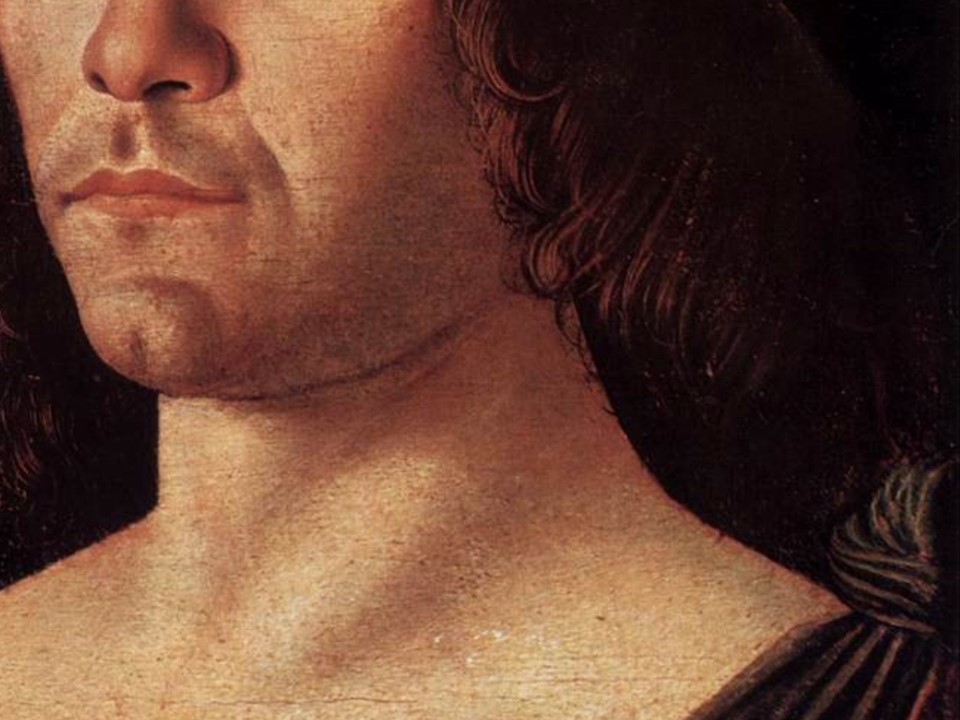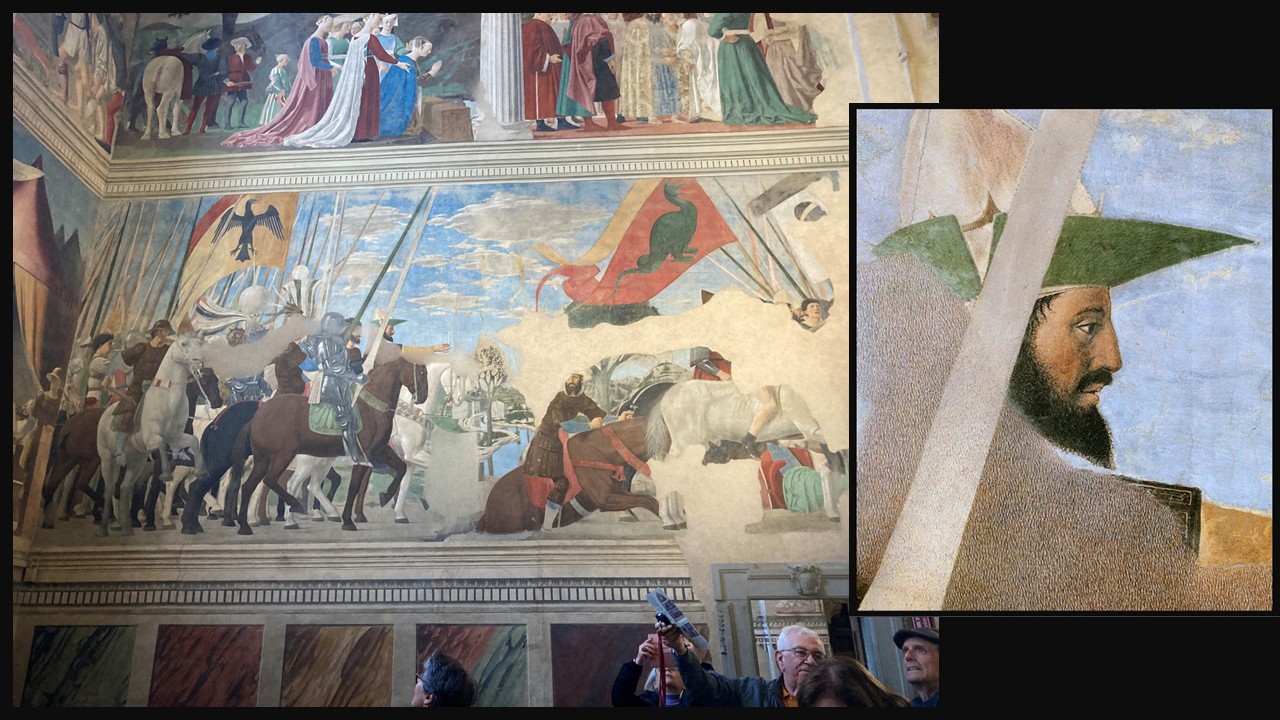
View of the Cappella Maggiore, 1452-66, Fresco, San Francesco, Arezzo, Italy – Photo Credit: Amalia Spiliakou, Spring 2025
Constantine’s face: https://www.wga.hu/frames-e.html?/html/p/piero/index.html
On the occasion of Saint Constantine’s name day, we turn our gaze to Piero della Francesca’s majestic fresco cycle, The Legend of the True Cross, in Arezzo. Painted in the mid-15th century on the walls of the Basilica of San Francesco, this monumental series draws from Jacopo da Varagine’s Legenda Aurea, a medieval text brought to life through della Francesca’s luminous palette, serene figures, and masterful use of perspective. Set against the familiar landscapes of Arezzo and Sansepolcro, the ten scenes trace the mythical journey of the wood of the Cross, from Eden to Jerusalem. Saint Constantine in Arezzo plays a pivotal role, both visionary and imperial. He is rendered with the calm authority and timeless grace that define della Francesca’s style—making this cycle not only a meditation on faith and history, but also a fitting tribute to the saint’s enduring legacy.
Piero della Francesca (c. 1412–1492) was born in the Tuscan town of Sansepolcro, where he would later return and spend much of his life. He likely received his early training in local workshops before working in Florence, where he encountered the innovations of artists such as Masaccio and Fra Angelico. By the 1440s, he had established himself as an independent master, receiving important commissions across central Italy. He painted for the courts of Ferrara, Rimini, and Urbino—centers of Renaissance humanism—most famously executing the fresco cycle The Legend of the True Cross in Arezzo between the 1450s and 1460s. His patrons included powerful figures like Sigismondo Malatesta and Federico da Montefeltro, the latter of whom he portrayed in one of his best-known portraits. In his later years, Piero devoted himself increasingly to writing treatises on mathematics and perspective, including De Prospectiva Pingendi and Libellus de Quinque Corporibus Regularibus. His eyesight deteriorated in old age, likely leading to the end of his painting career, and he died in his hometown in 1492. Giorgio Vasari praised him in his Lives of the Artists, calling him ‘a man so devoted to geometry and to the mathematical sciences, and so excellent in them, that he has left in writing many treatises which are no less useful than delightful.’ https://it.wikisource.org/wiki/Le_vite_de%27_pi%C3%B9_eccellenti_pittori,_scultori_e_architettori_(1568)/Piero_della_Francesca
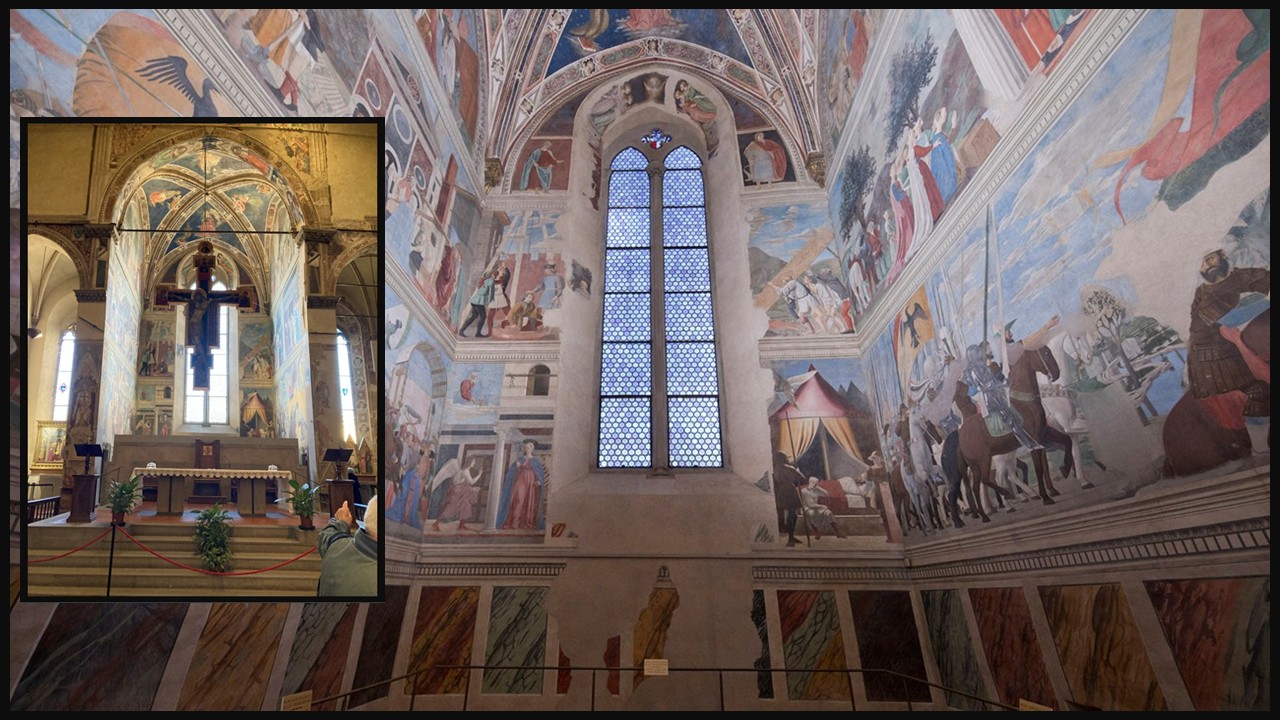
View of the Cappella Maggiore, 1452-66, Fresco, San Francesco, Arezzo, Italy https://www.iguzzini.com/de/news/neues-licht-fur-piero-della-francesca/
View of the Cappella Maggiore, Photo Credit: Amalia Spiliakou, Spring 2025
The artist’s fresco cycle The Legend of the True Cross, is one of the masterpieces of Renaissance art. The cycle narrates the legendary history of the wood of the Cross, from the time of Adam to its rediscovery by Saint Helena. Executed with remarkable clarity, balance, and use of perspective, the frescoes reflect Piero’s intellectual engagement with geometry and humanist ideals. Among the most striking scenes is The Victory of Constantine over Maxentius, where Piero stages the miraculous triumph of Constantine, guided by a vision of the Cross in the sky. Bathed in soft, ethereal light, the battle scene showcases Piero’s mastery of atmosphere and foreshadows the spiritual power attributed to the relic, underscoring themes of divine intervention and the legitimacy of Christian rule.
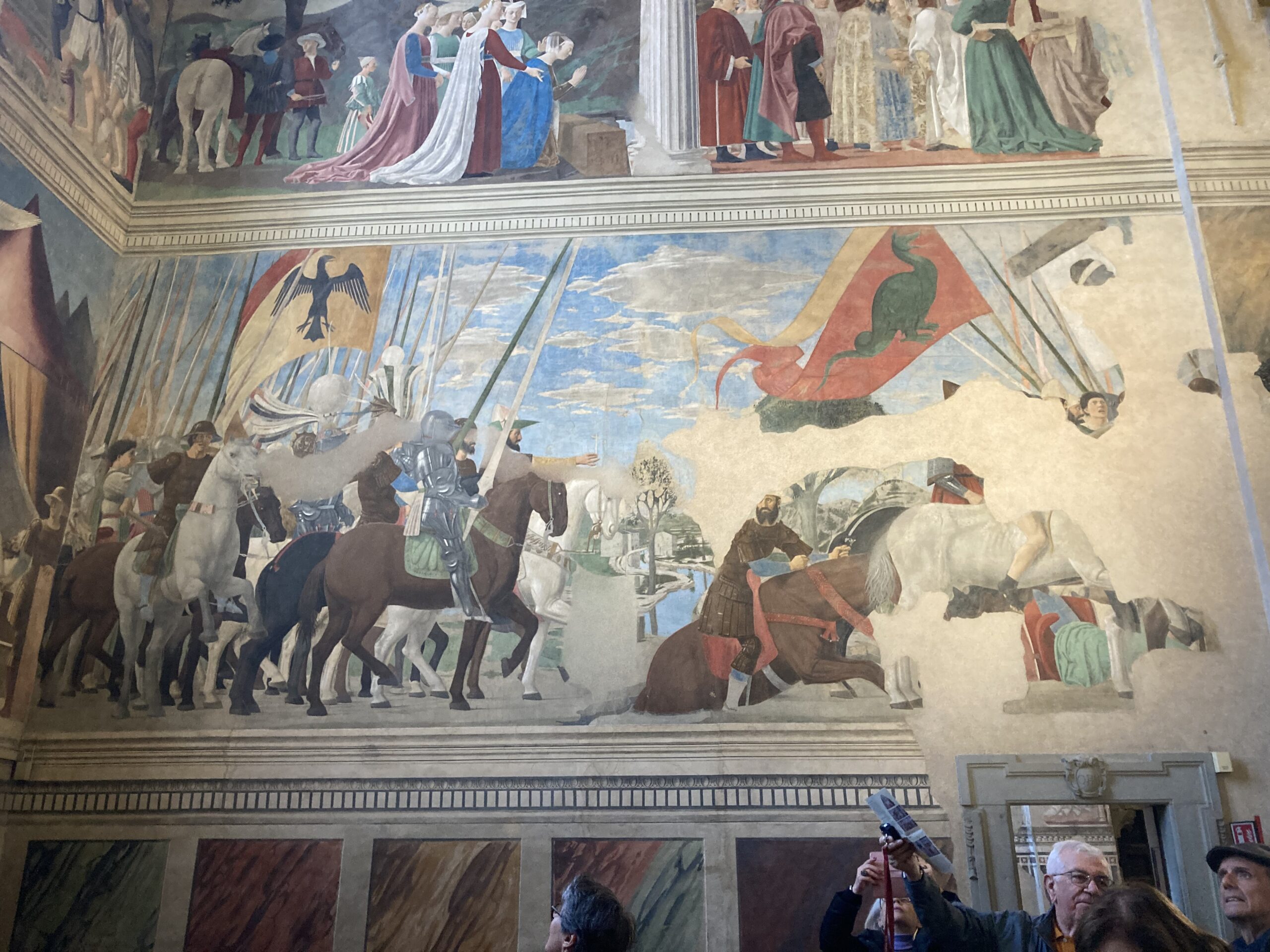
View of the Cappella Maggiore, 1452-66, Fresco, San Francesco, Arezzo, Italy – Photo Credit: Amalia Spiliakou, Spring 2025
Giorgio Vasari, writing in the Lives of the Artists, offers a vivid and admiring account of Piero della Francesca’s depiction of the fresco at San Francesco in Arezzo. Vasari highlights Piero’s extraordinary ability to convey the psychological and physical intensity of battle, writing: “In this same story he effectively expressed in a battle the fear, the animosity, the dexterity, the strength and all the other emotions that can be considered in those who fight, and the accidents likewise, with an almost incredible slaughter of wounded, fallen and dead. In which, for having counterfeited in fresco the arms that shine, Peter deserves the greatest praise, no less than for having made on the other side, where there is the flight and submersion of Maxentius, a group of cavalry in foreshortening, so marvelously executed, that compared to those times they can be called too beautiful and too excellent.” Vasari is particularly struck by Piero’s anatomical precision, noting a “half-naked and half-dressed Saracen on a dry horse, very well discovered in anatomy, little known in his time.” The praise concludes with recognition of Piero’s impact on the city of Arezzo and his patrons: “For this work he deserved to be richly rewarded by Luigi Bacci… and to be, as he was afterwards, always loved and revered in that city, which had so illustrious his works.” Vasari’s words underscore the technical brilliance and emotional depth of Piero’s art, as well as its lasting cultural significance. https://it.wikisource.org/wiki/Le_vite_de%27_pi%C3%B9_eccellenti_pittori,_scultori_e_architettori_(1568)/Piero_della_Francesca
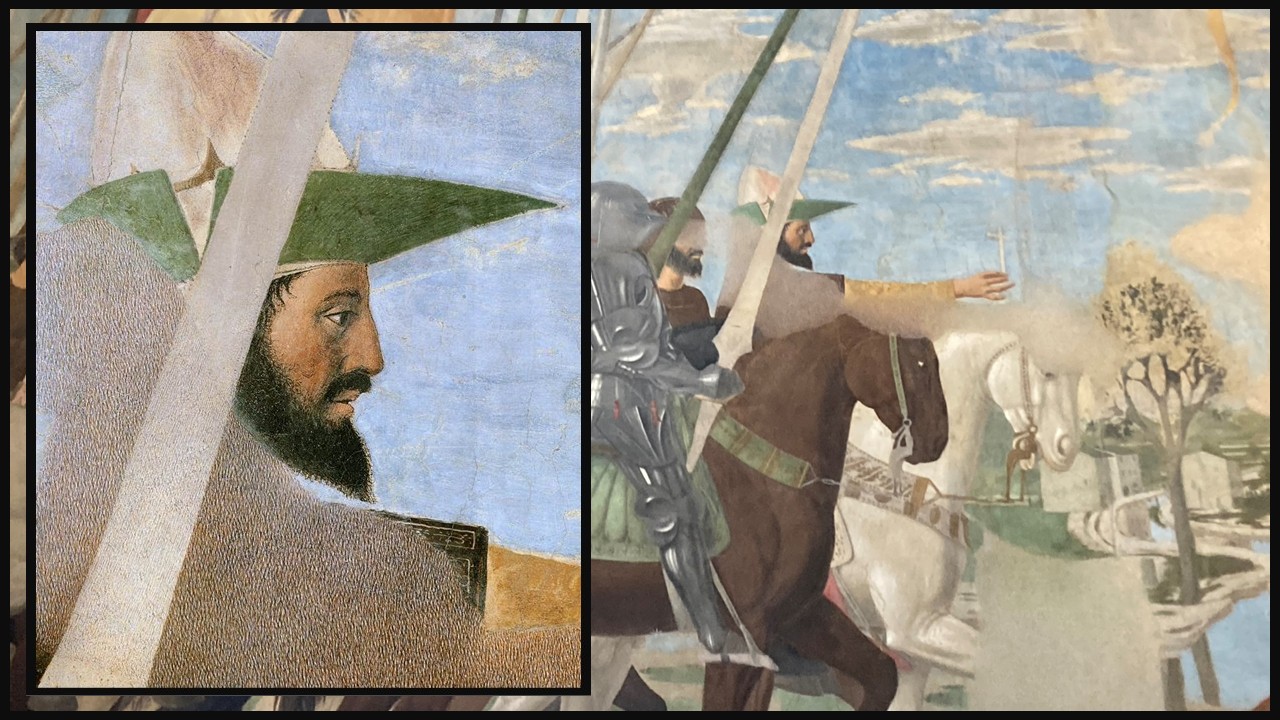
View of the Cappella Maggiore, 1452-66, Fresco, San Francesco, Arezzo, Italy – Photo Credit: Amalia Spiliakou, Spring 2025
Constantine’s face: https://www.wga.hu/frames-e.html?/html/p/piero/index.html
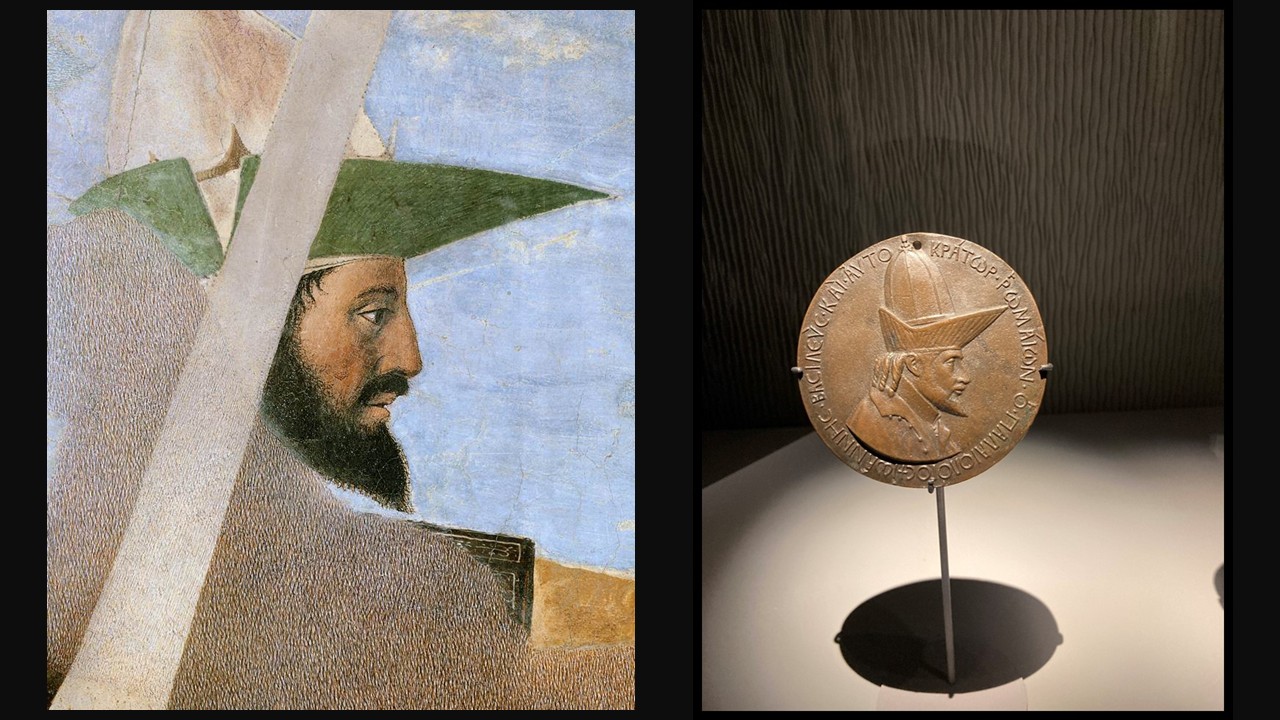
Constantine’s Victory over Maxentius, 1452-66, Fresco, San Francesco, Cappella Maggiore,Arezzo, Italy https://gr.pinterest.com/pin/736127501580922200/
Pisanello’s Medallion of Ioannis VIII Palaiologos, a loan from the Galleria Giorgio Franchetti at the Ca’ d’Oro, Venice, as exhibited in the Hôtel de la Marine, in Paris, France – Photo Credit: Amalia Spiliakou, March 2023
One of the most intriguing details in Piero della Francesca’s depiction of Emperor Constantine in The Victory over Maxentius is how closely the Roman leader resembles the Byzantine Emperor Ioannis VIII Palaiologos. Dressed in an ornate, exotic hat that echoes the imperial skaranikon worn by Palaiologos, Constantine seems less like a Roman general and more like a figure from the fading Byzantine court. The resemblance is especially striking when compared to Pisanello’s famous medallion of the Byzantine emperor, created during Ioannis’s visit to Italy in the 1430s. That historic journey, which brought the emperor to Florence in 1439 for the Council of Florence, a major attempt to reconcile the Eastern and Western Churches, had a profound impact on the cultural imagination of the time. His presence sparked fascination with Byzantine customs and appearances, influencing artists, intellectuals, and patrons alike. In this light, Piero’s portrayal of Constantine may be seen not only as a historical scene, but also as a subtle homage to a contemporary symbol of imperial dignity and spiritual unity, bridging the classical past with the complexities of Piero’s own era.
For a PowerPoint Presentation of Piero della Francesca’s frescoes in Cappella Maggiore, in the church of San Francesco in Arezzo, Italy, please… Check HERE!
For a teacher Curator BLOG POST on Byzantine Emperor Ioannis VIII Palaiologos, and his portrait on Pisanello’s famous Medallion, please Check… https://www.teachercurator.com/art/face-to-face-with-emperor-ioannis-viii-palaiologos/
Bibliography: https://museiarezzo.it/affreschi-di-piero-della-francesca/
